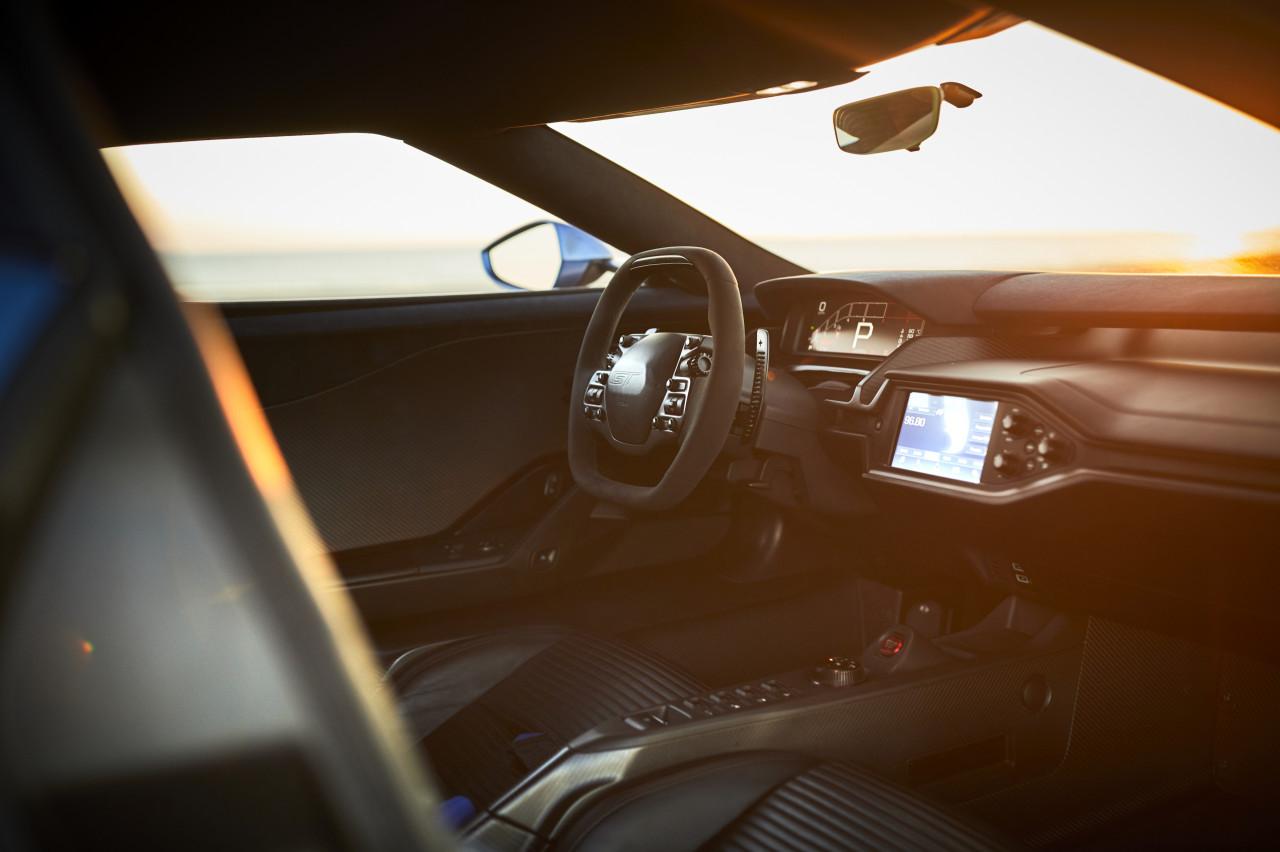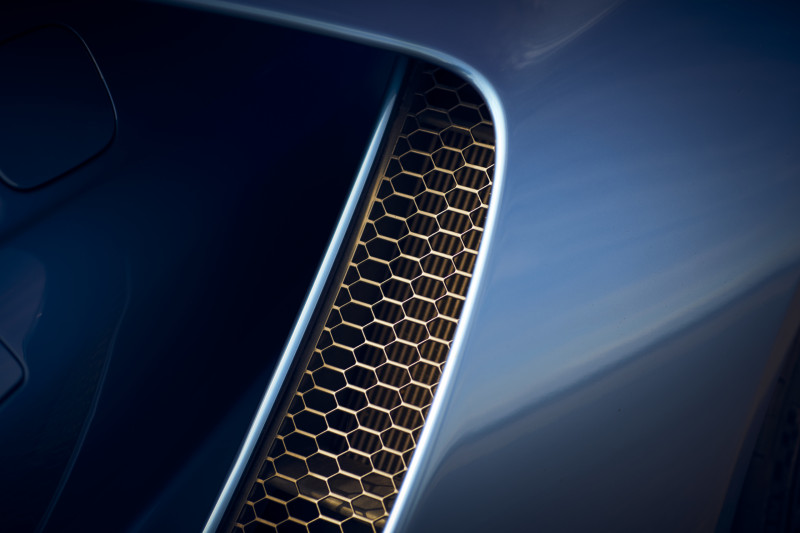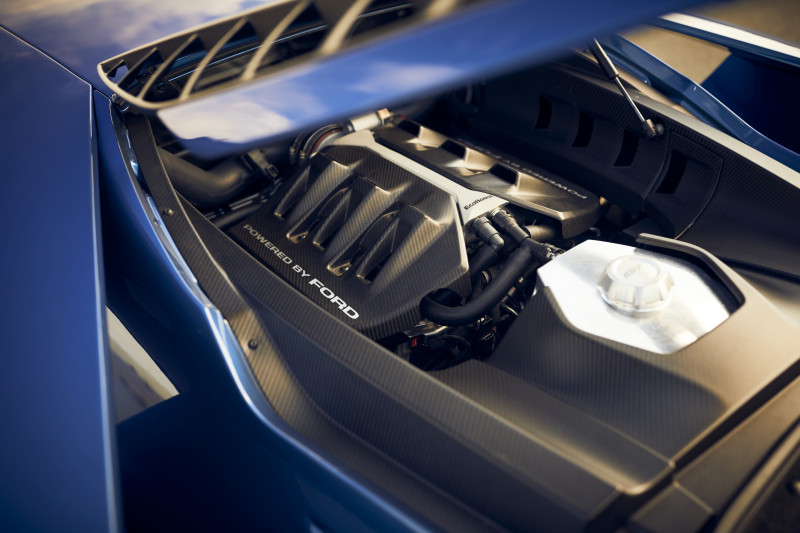The Ford GT is not just any supercar. His cradle was in a garage box, right on the pit lane of the circuit. It was developed with one goal in mind: to win races. A street version of the marathon runner also appeared. And it was at our complete disposal for a whole 24 hours.

Have you seen the movie Ford v Ferrari? Then you know your classics by now. It is true that the film is topped with a creamy and high-calorie Hollywood sauce, but the background story that is told deviates only marginally from reality. Ford management once sat at the table with Enzo Ferrari to negotiate a takeover. However, Ferrari withdrew from the deal with the Americans at the very last minute, only to sell a share to Fiat. A political joust, such as can only take place in Italy…
At the Ford Motor Company, they wanted sweet revenge. If only they could humiliate Enzo Ferrari on the terrain where he had asserted his dominance for so many years! At Ford they built a car that had to put the Italian thoroughbred racing cars on their number. The Americans succeeded in their mission – and how! The GT40 won at Le Mans not just once, but even four times in a row, from 1966 to 1969.

Ford GT immediately won its first 24 Hours of Le Mans
The heroic success story of the GT40 turned out to be fertile ground for all kinds of sequels. For example, the illustrious Le Mans winner was the model for countless replicas, if necessary with the technology of a Beetle. Inspired by the GT40, Ford took the lead in building a futuristic concept car (the GT90), a retrospective study to mark Ford’s 100th anniversary and an exclusive limited editionespecially for car collectors who could not afford an original Ford GT40.
In 2016, fifty years after the GT40’s first victory, Ford returned to the hallowed ground of Le Mans. Once again, the American company had developed a racing car that had to cut down on the competition – and not just those from Maranello. Under the watchful eye of the American race boss Chip Ganassi, four copies of the new Ford GT appeared at the start of the famous 24-hour race. They drove a watched race, and immediately relegated Ferrari on their debut. But not only Le Mans was a prey for the Ford GT. Also on illustrious circuits such as Daytona, Silverstone, Spa-Francorchamps and Laguna Seca, Ford’s new racing car wrote glorious history.

Immediately recognizable as a descendant of the Ford GT40
In order to compete with the GT in the LM GTE class of the FIA World Endurance Challenge, Ford made a commitment to produce a road version. Since 2016, Ford has built no more than 250 units on an annual basis, so that the homologation requirements are more than met and the exclusivity of the expensive supercar is still guaranteed. The last one will be built in 2022 by Multimatic Motorsports in Ontario, Canada. Then the counter stands at a total of 1350 pieces.
Everything about the Ford GT and other sports cars straight to your mailbox?
Subscribe to the Auto Review newsletter.
The shape of the headlights and taillights makes the Ford GT instantly recognizable as a modern interpretation of the original GT40 from the 1960s. However, the technical affinities between the two racehorses stop at the central position of the engine. You can immediately see that the modern GT has spent many hours in the wind tunnel, where the aerodynamics and downforce have been planed and filed. That was different in the 1960s. Then the effect of a wing here or a spoiler there was tried out on the track. With all the associated risks, if the experiments didn’t work…


The rear of the Ford GT is particularly spectacular, due to the extreme teardrop shape of the monocoque and the deep airlocks between the body and the ‘loose’ housing of the rear wheels. The face is dominated by exhaust ducts, for the airflow around the sheet metal, the hot air from the engine compartment and the exhaust gases through the double Akrapovic tubing. On top of it rests the rear spoiler, which automatically lifts itself when you switch driving programs with the rotary knob on the steering wheel. In Track, the active spoiler immediately acts as an air brake. And if you switch back to a more soothing setting of the electronics, the grand piano falls back into its rest position with the subtlety of a guillotine.

Room for two people. And only just…
Even though it was born in a pit box on the edge of the track, the Ford GT has been assembled with laboratory precision. It is the product of a costly racing program that was started to achieve the ultimate goal. Only a handful of supercars have been developed in a similar way: first the racing car, then a road version. The fact that Ford was already flagged as the winner on the very first attempt at Le Mans makes the GT even completely unique. An achievement to which wealthy car collectors are very sensitive.


You have to be on your toes not to be completely blown away by the intimidating appearance of the Ford GT. He is extremely wide and extremely low built. The streamlined teardrop shape of the carbon monocoque makes the cabin just spacious enough for two people. You can only find a sitting position that suits your height with the adjustable pedals. Of course you’re sitting with your head close to the roof, but hey: you’re in a Ford GT!
One push of the start button is enough to forget all the physical discomfort. The question of whether Ford for the money (from six tons) could not have been a bit more generous with strips of leather and precious metals, is immediately lost. Behind your back awakens the engine that won the battle of attrition at Le Mans.

What?! Not a V8, but a six-cylinder?
The EcoBoost engine is not only the centerpiece of the GT, but has also been the center of some non-mild criticism on social channels. It is ‘just’ a V6 with two turbos. And the noise the machine produces would especially fuel disappointment. Okay, the GT doesn’t have a V8 or V10. But when you look for the maximum power of 647 hp and the highest torque of no less than 745 Nm, the V6 activates all the hairs in your neck and on your arms.


Through the Akrapovic exhaust, it produces a venomous timbre, which leaves no confusion about the location of its cradle. If you listen closely, you can even discern hints of the big V8s from the historic racing GT40s in the noisy resonance that echoes through the carbon monocoque. The EcoBoost-V6 does sound very good in its own way.
For road use, the Ford GT has undergone a beginner’s etiquette course only. Electronic aids on the undercarriage prevent you from bouncing straight off a cobblestone road into a ditch and stranding on the first speed bump. But otherwise the street-legal GT does not deny its origin. You feel in everything that this is a modified race car. The control is almost a telepathic experience, the feedback from the chassis directly like a fist fight. You prefer to shift gears yourself, with the large perforated elephant ears behind the small sports steering wheel, although you can also switch gears automatically with the seven-speed dual-clutch transmission.

Giving gas is a matter of preparation. First you need to check the quality of the pavement, calculate the width of the road and correctly estimate the distance to the vehicles in front. As soon as you move your right foot down, time seems to accelerate. As if you are being launched with a rocket, you are suddenly in a completely different location. Keep the throttle down, and you’ll be moving in light years instead of miles. Insane! insane! Behind the wheel of the
Ford GT you soon no longer speak a sensible word.